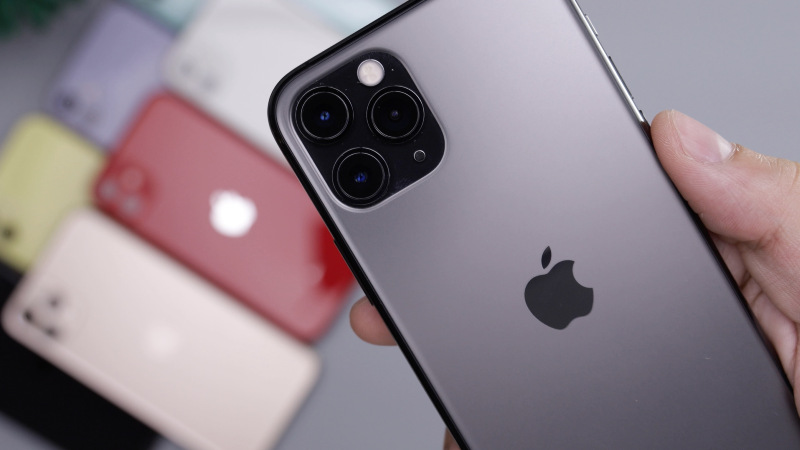Mobile-First Indexing Is Here! What You Need to Know.

The way in which Google determines search engine rankings is changing. Are you ready for mobile-first indexing?
What Is Mobile-First Indexing?
Mobile-first indexing is a new model by which Google will be indexing and ranking websites. Whereas in the past Google had based its indexing and ranking on the desktop version of sites, the search engine leader has been migrating to a mobile-first model.
Google initially announced the shift to mobile-first indexing back in 2016. Since that time, they’ve been rolling it out incrementally to more and more sites. In March 2020, Google announced that they would switch over to mobile-indexing for all websites around the world by September 2020, but then Google pushed that deadline to March 2021 due to COVID.
March 2021.
This month.
Are you ready?
Mobile searches in Google have outnumbered desktop searches for more than five years. There’s no denying the increasing popularity of mobile search. But that alone doesn’t translate into anything specific as to what you need to do in order to maintain or even increase your Google visibility.
What does mobile-first indexing mean for your website? And what’s important to understand about mobile-first indexing? Read on to find out!
Mobile Traffic Is Moot
I’ve run into a number of companies that believe that since the vast majority of their site traffic is from desktop, that they are essentially immune to the mobile-first indexing transition.
Let me clarify that that is a misunderstanding of mobile-first indexing. It has nothing to do with the percentage of traffic to your site from mobile.
Mobile-first indexing is the model by which Google will evaluate your site and determine SERP rankings. It doesn’t matter if your traffic is primarily from desktop, tablet, or smartphone. Even if 99% of your traffic were from desktop, Google is still going to assess and determine your SERP rankings based on your mobile site.
Mobile-First Is Mobile-Only
Although Google has been calling it “mobile-first indexing,” make no mistake that this change means that it’s actually “mobile-only indexing.” Google is going to be looking exclusively at your mobile site in order to determine your Google rankings. In other words, Google is not going to factor your desktop site into its index or rankings. For many of you, I realize that may be coming as a shock. It’s true, though, and it’s important that you’re aware of this distinction.
Generate Higher SEO ROI
Learn to drive greater organic rankings, traffic, and leads. Book a Strategy Call
Deliver the Same Experience across Mobile and Desktop Devices
Often brands will hide elements on their mobile site that appear on the desktop version of their sites. The motivation for this might be understandable, given that the mobile screen is so much smaller than that on desktop. But it’s a bad strategy overall.
A major Google ranking factor is the relevancy and quality of your content. If you start hiding content on your mobile site, consider that Google is not going to take it into account when ranking your pages.
Google straightforwardly advises that a website provides the same experience across both mobile and desktop: “If your mobile site has less content than your desktop site, consider updating your mobile site so that its primary content is equivalent to your desktop site. Almost all indexing on your site comes from the mobile site.”
Checking Your Website’s Status
Want to confirm if your site has already been switched over by Google to mobile-first indexing?
- Log into Google Search Console (GSC).
- Go to “Settings”.
- Check “About” > “Indexing crawler” to see the crawler being used on your site, and if and when your site is being indexed based on mobile-first indexing.
- If your site is now on mobile-first indexing, GSC will list the date of the transition.
Check Your Site’s Mobile-Friendliness
With Google assessing your mobile site exclusively in determining your future organic rankings, it behooves you to make sure that your site is very mobile-friendly. Is your text size large enough for easy reading? Are your buttons large enough for navigating with your thumb? Is there sufficient padding around your small screen?
You can use Google’s Mobile-Friendly Test tool to see if your site has any obvious weaknesses on mobile. Or, alternatively, go to “Enhancements” > “Mobile Usability” in Google Search Console.
Check Your Page Load Time on Mobile
Page load time is a Google organic ranking factor. Now that Google is basing rankings on mobile-first indexing, it behooves you to ensure your mobile site is blazingly fast. And the best way to validate if your mobile site is fast-loading is to test it.
You can see how Google measures the page load time of your web pages including a Google mobile site check using Google’s PageSpeed Insights tool. PageSpeed Insights analyzes the content of a web page, and then provides suggestions for enhancing the load time of the page.
Google also offers documentation related to PageSpeed Insights so that you can fully understand the terms and stats that are included in the associated reporting.
At the heart of Google PageSpeed Insights data are the PageSpeed Insights (PSI) reports. These calculate the performance of a page on both mobile and desktop devices, and also provide suggestions on how that page may be improved.
PSI provides both lab and field data (how your website performs out in the real world) about a web page. As lab data is collected in a controlled environment, it may be the most useful for correcting speed performance issues. However, because it’s in a controlled environment, it may not capture the issues that your site runs into in the real world. That’s where field data comes in as an additional reference point.
Still have questions about Google PageSpeed Insights? Post them to the Stack Overflow community here.
Get Serious SEO Results
Learn to drive greater organic rankings, traffic, and leads. Book a Strategy Call
Using Google Search Console to Check Your Mobile Speed
You can also go to “Enhancements” > “Core Web Vitals” > “Mobile” in Google Search Console. There you can view a mobile Core Web Vitals report, as well as a separate desktop report. Click “Open Report” for either, and access performance reporting on URLs that are considered “Poor”, “Need Improvement”, and “Good”.
Mobile-First Indexing Best Practices
To ensure that Google can access and render your mobile page content, follow the best practices below as outlined by Google itself:
- Use the same meta data on both your mobile and desktop sites.
- Don’t lazy-load primary content upon user interaction. Google states that it won’t load content that requires user interaction to load (swiping, clicking, typing, etc.).
- Let Google crawl your resources. Double check your disallow directives.
- Make sure that your mobile and desktop sites have the same structured data.
- If you use Google’s Data Highlighter, point it at your mobile site.
- And as mentioned above, make sure that your mobile site is displaying the same content as on desktop.
Mobile-First Indexing Now
It’s now or never. In alignment with the latest SEO trends, go all in on mobile optimization and a great mobile user experience. GO MOBILE! If you have concerns about your mobile site, book a strategy call! We are a B2B SEO agency that is always ready to tackle issues like mobile-first search engine optimization.




